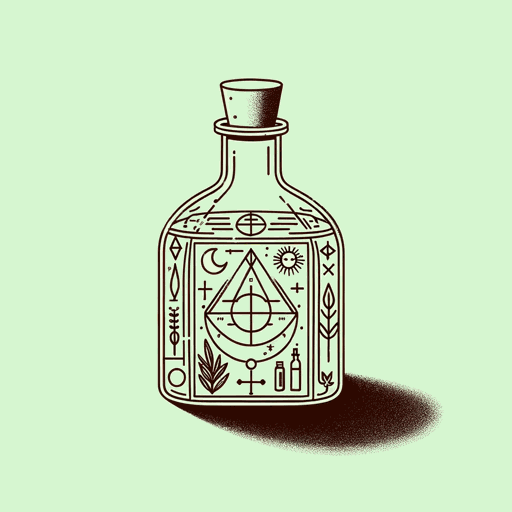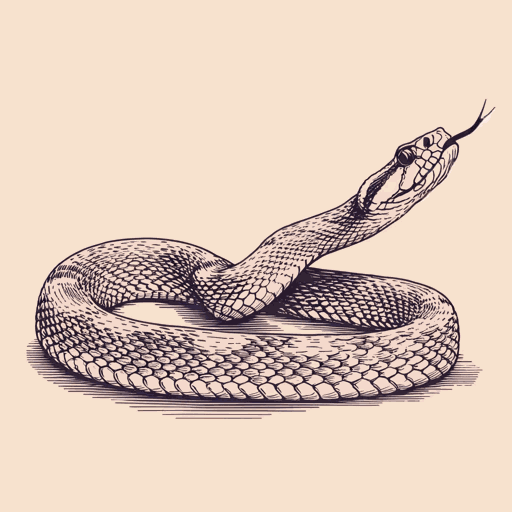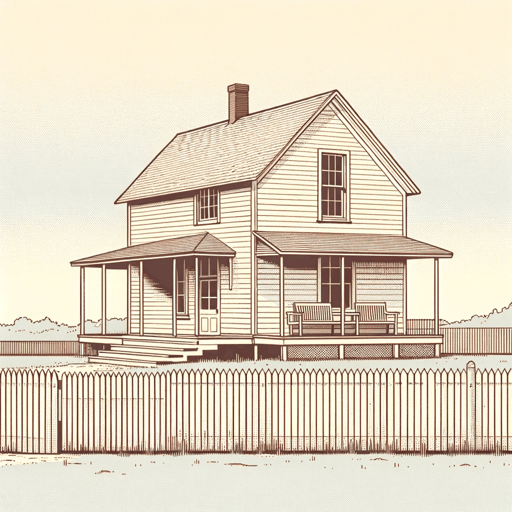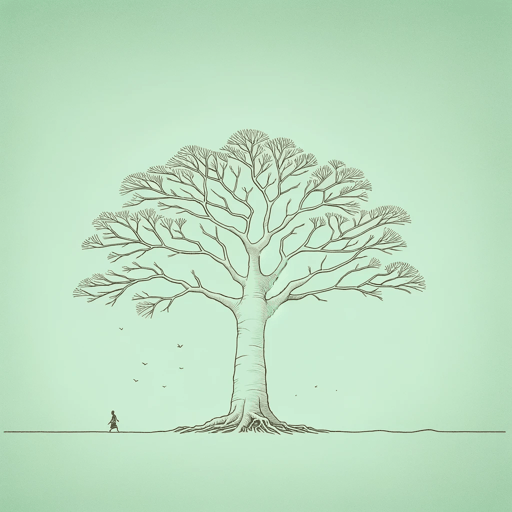51 pages • 1 hour read
Zora Neale HurstonBarracoon: The Story of the Last "Black Cargo"
Nonfiction | Biography | Adult | Published in 2018A modern alternative to SparkNotes and CliffsNotes, SuperSummary offers high-quality Study Guides with detailed chapter summaries and analysis of major themes, characters, and more.
Summary and Study Guide
Overview
Originally written in the late 1920s and early 1930s, Barracoon: The Story of the Last “Black Cargo” (2018) is the transcribed posthumous autobiography of the life of Oluale “Cudjo Lewis” Kossola (1841-1935), written by Zora Neale Hurston (1891-1960). Known for her involvement in the Harlem Renaissance, Hurston was a writer, anthropologist, folklorist, and filmmaker. In all her work, she held a special appreciation for Black life and Black culture of the US South. Her works include Their Eyes Were Watching God (1937), Dust Tracks on a Road (1942), and Mules and Men (1936). Edited by independent scholar Deborah G. Plant, Barracoon became a New York Times bestseller, was Time magazine’s Best Nonfiction Book of 2018, and was named Best Book of 2018 by National Public Radio’s Book Concierge.
This study guide cites the Harper Collins Digital Edition published in December 2019.
Content Warning: The source material and this guide describe slavery, extreme violence, murder, and police brutality.
Summary
Barracoon is the firsthand account of the life of Oluale “Cudjo Lewis” Kossola, an African man who was among the captives on the Clotilda, the last slave ship to take the Middle Passage journey in 1859. The text was developed by anthropologist and creative writer Hurston, who spent many weeks interviewing Kossola. Hurston transcribed what Kossola told her during their time together, making her best effort to capture his oral and physical performance in the writing. Consequently, the narrative sometimes meanders, but it consistently follows the linear trajectory of Kossola’s life, parallel to Hurston’s framing narrative, which describes her encounters with him. Barracoon follows the remarkable experiences of a man who enjoyed a joyful youth in Africa, endured the trials of the Middle Passage and slavery in the US, and rebuilt his life anew in Africa Town, Alabama, raising a family of his own and outliving them all. It’s a sometimes comical, sometimes tragic historical record about home and exile, pain, joy, family, and the whims of life and death.
In the Introduction, Hurston explains that she first met Kossola while doing research for her advisor at Barnard College, Dr. Franz Boas. She later interviewed Kossola for her own work in constructing his autobiography. Hurston provides historical background for the slave trade, tracing the illegal journey of the ship the Clotilda to Africa, what happened there, and the details of its return to the US with African captives aboard.
Chapter 1 begins with Hurston’s framing narrative, describing one of her visits to Kossola’s house Kossola tells Hurston about his father and grandfather, who was a chief in his African hometown and had many wives and children. In Chapter 2, Hurston arrives with peaches as a gift for Kossola. That day, he continues talking about his grandfather’s life. Kossola shares how a man illegally kept a poisonous leopard whisker and faced a fatal punishment for doing so. In Chapter 3, Kossola tells about when his grandfather fell ill and died. All his wives and the local people mourned together. Kossola describes the customs surrounding the death of someone like his grandfather. In Chapter 4, Hurston brings Kossola two Virginia hams and a watermelon. He shows her the nearby church where he’s the sexton. Kossola talks about his father, who was a chief to the king, and describes the coming-of-age rituals for boys in his village of Bantè in Takkoi and the training that young men underwent to become soldiers.
In Chapter 5, Kossola tells of the attack of Dahomey soldiers on Takkoi. In this brutal attack, individuals were either beheaded or captured to be sold into slavery. In Chapter 6, Hurston returns and helps Kossola clean the church. Kossola continues telling her about his capture. He and other captives were taken to the west coast of Africa, where they were kept for several weeks in a barracoon (or holding place). They were then sold, boarded onto a slave ship, and taken to the United States. In Chapter 7, Kossola describes his life while enslaved. He was responsible for hauling wood and freight on and off boats. The work was grueling and difficult. One day during the Civil war, Union soldiers came by the boat he was working on and told him that he was free. In Chapter 8, Kossola and the other freed people figured out how to rebuild their lives. They founded Africa Town, selected leaders among themselves, and built a church.
In Chapter 9 Kossola explains how he met his wife, Abila/Seely, a fellow African woman, in the US. They raised a family of five sons and one daughter. He describes how the deputy sheriff shot one of his sons and how his daughter died of illness. Chapter 10 describes a time when Kossola went out to Mobile, Alabama in his buggy and was hit by a train that ran through town. This serious injury is the reason that he uses a cane. He hired a lawyer to sue the railroad, but when they won the case, the lawyer ran away with all his money. In Chapter 11, Kossola tells Hurston about another of his sons, David, who was killed by a train in Plateau. Another son, Poe-lee, was outraged by the injustice and went out one day, never to return. Just months later, another of his sons, Jimmy, fell ill and died. The day that Kossola tells this to Hurston, she takes his photograph. In Chapter 12, Kossola explains how his wife, Abila, fell ill with grief over her children and died. Their last living son, Aleck, died shortly after that. Kossola accepts that Abila always belonged to God and it was God’s right to take her back. Hurston closes the narrative by reflecting on the two months she spent befriending and interviewing Kossola.
Related Titles
By Zora Neale Hurston

Drenched in Light
Zora Neale Hurston

Dust Tracks on a Road
Zora Neale Hurston

Hitting a Straight Lick with a Crooked Stick
Zora Neale Hurston

How It Feels To Be Colored Me
Zora Neale Hurston

Jonah's Gourd Vine
Zora Neale Hurston

Moses, Man of the Mountain
Zora Neale Hurston

Mule Bone: A Comedy of Negro Life
Langston Hughes, Zora Neale Hurston

Mules and Men
Zora Neale Hurston

Seraph on the Suwanee
Zora Neale Hurston

Spunk
Zora Neale Hurston

Sweat
Zora Neale Hurston

Tell My Horse: Voodoo and Life in Haiti and Jamaica
Zora Neale Hurston

The Eatonville Anthology
Zora Neale Hurston

The Gilded Six-Bits
Zora Neale Hurston

Their Eyes Were Watching God
Zora Neale Hurston
Featured Collections
A Black Lives Matter Reading List
View Collection
African American Literature
View Collection
African History
View Collection
Anthropology
View Collection
Books on Justice & Injustice
View Collection
Books on U.S. History
View Collection
Challenging Authority
View Collection
Civil Rights & Jim Crow
View Collection
Community
View Collection
Contemporary Books on Social Justice
View Collection
Family
View Collection
Harlem Renaissance
View Collection
Historical Fiction
View Collection
Memory
View Collection
New York Times Best Sellers
View Collection
Power
View Collection
Sexual Harassment & Violence
View Collection
The Best of "Best Book" Lists
View Collection

